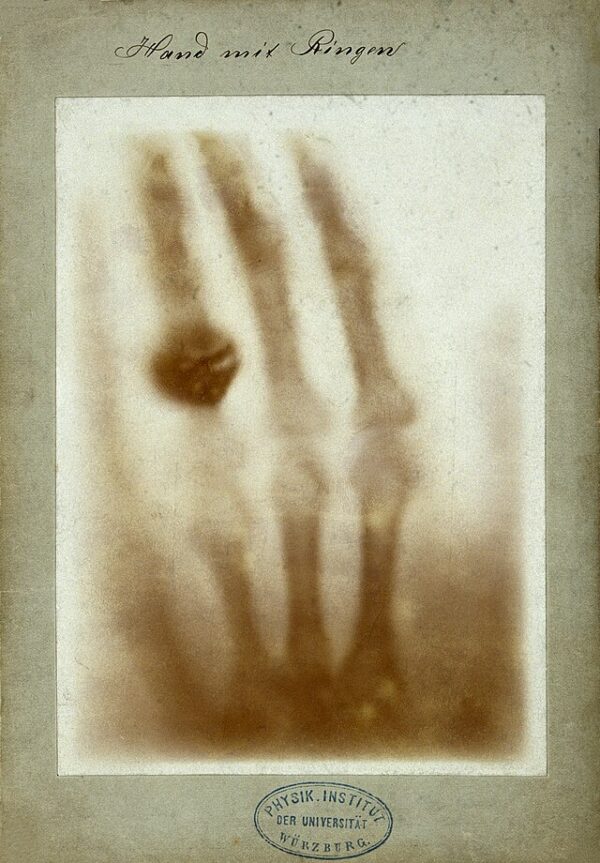Wilhelm Conrad Röntgen, a German physicist, made a groundbreaking discovery on November 8, 1895, that would change the fields of medicine and science forever: the X-ray. His journey began with his experiments on cathode rays, a form of electricity, which he conducted using Crookes tubes—specialized glass tubes with electrodes at each end that emit light when a high voltage current passes through them. Little did Röntgen know, his curiosity and careful observation would lead to one of the most important scientific discoveries of the 19th century.
During one of his experiments, Röntgen noticed a peculiar effect: even when the tube was wrapped in thick black cardboard to block visible light, a fluorescent screen nearby continued to glow. This strange effect could not be attributed to cathode rays, as they should not have been able to penetrate the barrier. Röntgen quickly realized that he was observing something new, a previously unknown type of ray. Since he couldn’t identify the exact nature of this mysterious radiation, he named it “X-ray,” using the mathematical symbol “X” to signify an unknown variable.
Röntgen conducted further tests to understand the properties of these new rays. He discovered that X-rays could pass through most substances, including human tissue, but were absorbed by denser materials like bones and metal. This was confirmed when he placed different objects between the X-ray source and a photographic plate. To his amazement, the images captured showed outlines of internal structures that would normally be hidden from view. On December 22, 1895, just a few weeks after his initial discovery, Röntgen created the world’s first X-ray image of a human body—an image of his wife’s hand. The photograph revealed the bones of her fingers and the ring on her finger with startling clarity. This image would later become one of the most iconic representations of Röntgen’s discovery.
The scientific and medical communities were quick to recognize the potential of X-rays. Within weeks, news of Röntgen’s work spread across Europe and the United States, and scientists began experimenting with X-rays in various fields. Doctors soon realized that X-rays could be used to look inside the human body without invasive surgery. This marked the beginning of diagnostic radiology, a field that has since become essential to modern medicine. For the first time, physicians could diagnose fractures, locate foreign objects, and even identify diseases such as tuberculosis simply by observing the internal structures of the body.
While Röntgen’s work revolutionized medical diagnostics, he also exhibited caution regarding the potential dangers of X-rays. At the time, the biological effects of radiation were not well understood, and early researchers were unaware of the risks associated with prolonged exposure. Röntgen himself remained cautious and focused solely on the scientific aspects of his work, declining to pursue any patents or personal financial gain from his discovery. His humility and dedication to the pursuit of knowledge earned him immense respect within the scientific community.
In 1901, Wilhelm Röntgen was awarded the first-ever Nobel Prize in Physics for his discovery of X-rays, a testament to the profound impact of his work. Röntgen’s discovery sparked an era of rapid innovation, leading to advancements in both medical and scientific fields. X-ray technology continues to evolve to this day, with modern imaging techniques like CT scans and MRIs building on Röntgen’s original work.
Today, Wilhelm Röntgen is celebrated not only for his monumental discovery but also for his ethical commitment to science. By choosing not to patent his work, he ensured that X-ray technology would be freely accessible to the world, paving the way for the medical breakthroughs that followed. His discovery remains one of the most significant achievements in the history of science and medicine, with the humble beginnings of his November 8 experiment now remembered as the moment that opened a window into the hidden structures of the human body.






